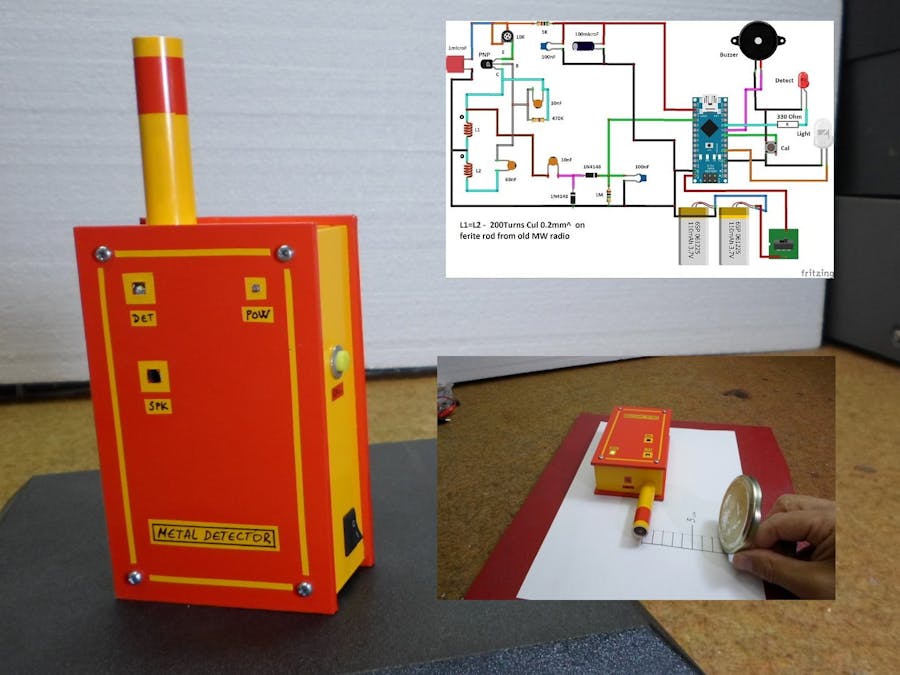A traditional metal detector can locate a burried item and give you a rough location of the object belw the ground
A pinpointer enables you to pin down an object's location, make a smaller hole when digging, and extract the item. Also, it can be used as handheld metal detector used by emergency responders to conduct security screening of individuals at access control checkpoints.
The device described above is very simple and contains a detector part consisting of a transistor, a ferrite core with windings and several more passive elements, and an Arduino Nano microcontroller with signaling elements and a calibration switch.
The method of working with the metal detector is as follows. The device switches on and after a few seconds the calibration switch is pressed. The device is now ready to detect metal objects.If we bring the probe closer to a metal object, the LED starts flashing and the Buzzer emits an intermittent sound. The closer we get to the subject, the higher the flashing frequency. The sensitivity of the detector is surprisingly good, considering that it is a very simple device and does not require any settings. Detects a small metal coin at a distance of 4-5 cm, and larger metal objects at a distance of 10 cm and more. In fact, its purpose is to locate more accurately the object that was previously detected with a standard metal detector. The Arduino code is taken from the arduinoprog.ru site and is made in FLPROG visual programming tool.
There is also an LED on the front that serves to illuminate the environment if we are looking for objects in dark places. This diode is activated by holding the calibration switch for 5 seconds, and the same applies to deactivation.
The device is powered by two lithium ion batteries connected in series and the consumption is extremely low, about 20mA in standby mode and 40-45mA when detecting a metal object so the battery lasts very long. Finally, the whole assembly is built into a suitable box made of PVC material.


















Comments
Please log in or sign up to comment.